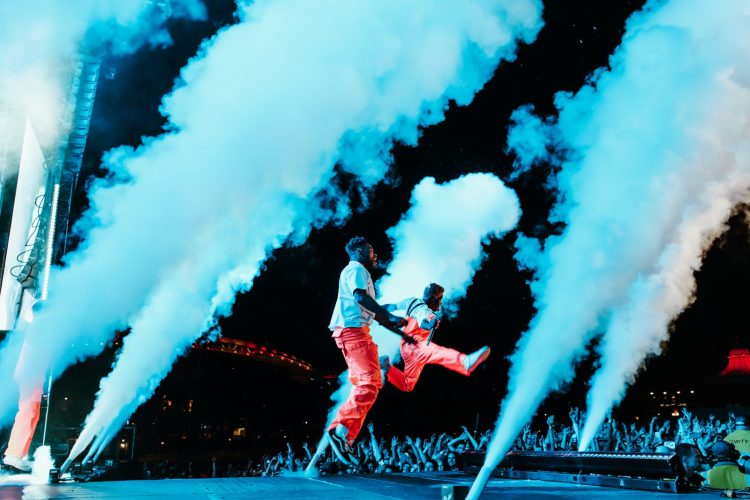Live music isn’t just a concert or a gathering of fans—it’s a cultural moment, a spark that can light movements, shift perspectives, and even change the course of music itself. While studio albums have their own polished brilliance, live performances are where the magic of unpredictability meets raw emotion, where artists and audiences connect in ways that transcend notes and lyrics. Across decades and genres, some live performances have done more than just entertain; they’ve reshaped the music industry and carved unforgettable memories into the collective consciousness.
This essay explores some of those landmark live performances that did more than impress—they defined eras, influenced generations, and forever altered the trajectory of music history. From genre-bending experiments to politically charged sets and genre-birth moments, these performances became cultural milestones, reminding us of music’s power to move, to provoke, and to unite.
The Beatles on the Ed Sullivan Show (1964)
The Birth of Modern Fandom
Few performances have had the seismic cultural impact of The Beatles’ debut on The Ed Sullivan Show. On February 9, 1964, over 73 million viewers tuned in across America to witness four young lads from Liverpool charm an entire nation. It was more than a performance—it was the ignition of the British Invasion, a moment that signaled a new era for rock music and global pop culture.
The Beatles didn’t just play their hits—they symbolized youthful rebellion, style, and an uncontainable energy that hadn’t been seen on U.S. television before. Screaming fans, tearful teenagers, and a stunned older generation watched history unfold in real time. Overnight, The Beatles went from British darlings to global icons, and a new blueprint was set for how live TV could launch careers into the stratosphere.
Jimi Hendrix at Woodstock (1969)
Reinventing the National Anthem
Woodstock was already a defining moment in counterculture history, but Jimi Hendrix’s early morning set turned it into something more spiritual. While most of the crowd had dwindled by the time he hit the stage on August 18, 1969, Hendrix delivered a haunting, distorted rendition of “The Star-Spangled Banner” that became a defining protest moment.
Using feedback, distortion, and electric wails, Hendrix turned a patriotic anthem into a searing critique of war and injustice. It wasn’t scripted, and it wasn’t subtle—but it was unforgettable. Hendrix didn’t just play a song; he reflected the turbulence of a generation, demonstrating how performance can be both art and activism.
Queen at Live Aid (1985)
The Pinnacle of Stadium Rock
It’s impossible to talk about history-defining performances without mentioning Queen’s legendary 20-minute set at Live Aid. Held on July 13, 1985, and broadcast to over 1.5 billion people, Live Aid was a benefit concert unlike any before it. Yet despite a lineup filled with music legends, Queen emerged as the undisputed highlight.
Freddie Mercury’s command of the Wembley Stadium crowd was something mythic. From the opening chords of “Bohemian Rhapsody” to the call-and-response during “Radio Ga Ga,” Mercury didn’t just sing—he conducted a symphony of 72,000 voices. Queen reminded the world what live performance could be: an intimate moment on a massive scale. It wasn’t just a concert—it was a coronation of Queen as the ultimate live band.
Nirvana on MTV Unplugged (1993)
The Sound of Vulnerability
Grunge was built on angst, distortion, and defiance—but in November 1993, Nirvana stripped everything down for their MTV Unplugged session, and in doing so, revealed the raw soul behind the noise. Unlike other Unplugged performances, Nirvana chose to focus on lesser-known tracks and haunting covers rather than just playing their biggest hits.
Songs like “Where Did You Sleep Last Night” took on new emotional weight in the quiet of that room. Just months before Kurt Cobain’s death, the performance felt almost prophetic—intimate, melancholic, and brutally honest. It showed that even the loudest bands had a vulnerable core, and it elevated the idea of acoustic sessions from gimmick to artistic expression.
Beyoncé at Coachella (2018)
A Cultural Celebration, Not Just a Concert
Beyoncé’s 2018 Coachella headlining performance—dubbed “Beychella”—wasn’t just a performance; it was a full-scale celebration of Black culture, academic excellence, and musical legacy. As the first Black woman to headline the festival, Beyoncé didn’t just put on a show—she made a statement.
Backed by a massive marching band inspired by Historically Black Colleges and Universities (HBCUs), and filled with cultural references, intricate choreography, and reimagined hits, Beyoncé’s performance redefined what festival headlining could look like. It was part concert, part history lesson, part empowerment rally—and all genius. Through music, visuals, and symbolism, she turned a massive stage into an intimate celebration of identity, resilience, and excellence.
Bob Dylan Goes Electric at Newport Folk Festival (1965)
The Shock Heard ‘Round the World
When Bob Dylan plugged in his electric guitar at the Newport Folk Festival in 1965, he didn’t just change his sound—he fractured a movement. Known for his acoustic protest songs, Dylan’s shift to electric blues-rock shocked and even outraged fans who saw it as a betrayal of the folk tradition.
But that moment, complete with boos and confusion, marked the beginning of rock’s lyrical maturity. Dylan’s choice paved the way for deeper, more complex songwriting in mainstream music and signaled the genre’s evolution. In going electric, he showed that live performances could be provocative, messy, and transformative—all at once.
David Bowie as Ziggy Stardust at Hammersmith Odeon (1973)
The Death of a Persona, the Birth of an Icon
David Bowie’s final performance as Ziggy Stardust was theatrical, emotional, and culturally significant. On July 3, 1973, Bowie announced to a stunned audience that this was the last show he’d ever do as Ziggy, his androgynous, otherworldly alter ego. The announcement shocked fans and the press alike.
Ziggy Stardust wasn’t just a character—it was a movement that challenged norms around gender, sexuality, and identity. Bowie’s retirement of Ziggy was the end of one era and the start of another. His fluid reinvention showed how artists could evolve on their own terms, and that performance could be as much about persona as it was about sound.
Kendrick Lamar at the 2016 Grammys
Hip-Hop as High Art
When Kendrick Lamar took the stage at the 2016 Grammy Awards, he turned a primetime music show into a powerful political statement. Arriving in chains, performing from a prison set, and delivering verses that touched on incarceration, racism, and Black identity, Kendrick didn’t play it safe—he lit a fire.
Tracks like “The Blacker the Berry” and “Alright” took on new dimensions in that setting. It wasn’t just rap—it was theater, protest, and poetry. In that moment, Kendrick proved that hip-hop was more than mainstream entertainment—it was high art, capable of shifting public consciousness in just a few minutes.





